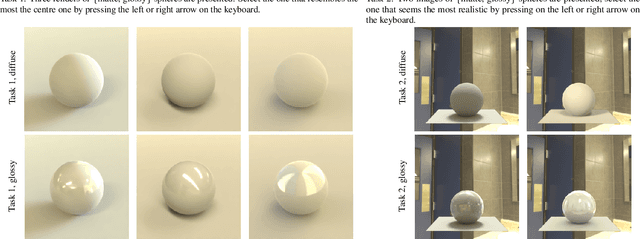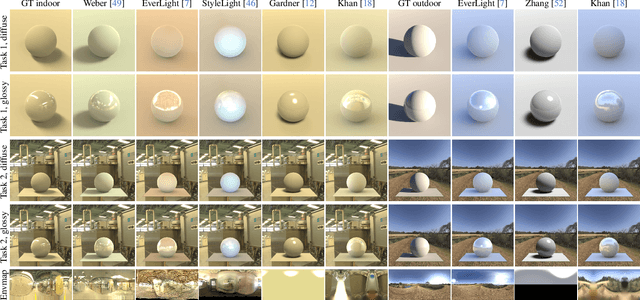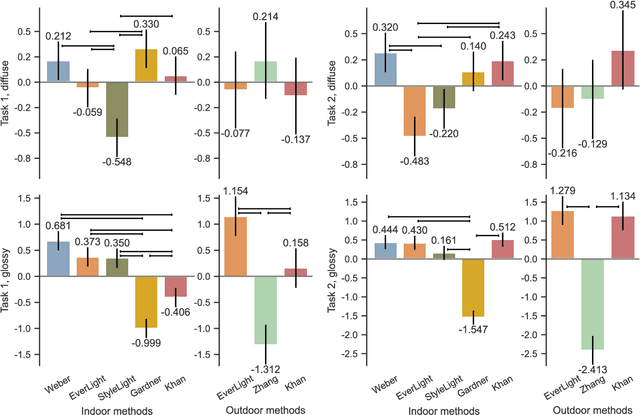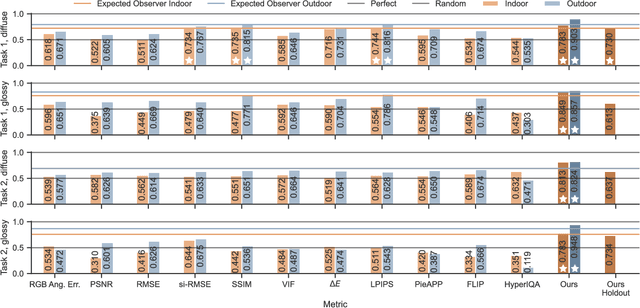Justine Giroux
Towards a Perceptual Evaluation Framework for Lighting Estimation
Dec 13, 2023



Abstract:Progress in lighting estimation is tracked by computing existing image quality assessment (IQA) metrics on images from standard datasets. While this may appear to be a reasonable approach, we demonstrate that doing so does not correlate to human preference when the estimated lighting is used to relight a virtual scene into a real photograph. To study this, we design a controlled psychophysical experiment where human observers must choose their preference amongst rendered scenes lit using a set of lighting estimation algorithms selected from the recent literature, and use it to analyse how these algorithms perform according to human perception. Then, we demonstrate that none of the most popular IQA metrics from the literature, taken individually, correctly represent human perception. Finally, we show that by learning a combination of existing IQA metrics, we can more accurately represent human preference. This provides a new perceptual framework to help evaluate future lighting estimation algorithms.
Beyond the Pixel: a Photometrically Calibrated HDR Dataset for Luminance and Color Temperature Prediction
Apr 24, 2023Abstract:Light plays an important role in human well-being. However, most computer vision tasks treat pixels without considering their relationship to physical luminance. To address this shortcoming, we present the first large-scale photometrically calibrated dataset of high dynamic range \ang{360} panoramas. Our key contribution is the calibration of an existing, uncalibrated HDR Dataset. We do so by accurately capturing RAW bracketed exposures simultaneously with a professional photometric measurement device (chroma meter) for multiple scenes across a variety of lighting conditions. Using the resulting measurements, we establish the calibration coefficients to be applied to the HDR images. The resulting dataset is a rich representation of indoor scenes which displays a wide range of illuminance and color temperature, and varied types of light sources. We exploit the dataset to introduce three novel tasks: where per-pixel luminance, per-pixel temperature and planar illuminance can be predicted from a single input image. Finally, we also capture another smaller calibrated dataset with a commercial \ang{360} camera, to experiment on generalization across cameras. We are optimistic that the release of our datasets and associated code will spark interest in physically accurate light estimation within the community.
 Add to Chrome
Add to Chrome Add to Firefox
Add to Firefox Add to Edge
Add to Edge